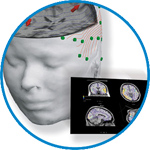- Home
- About ANT
-
Products

asa
asa is a highly flexible EEG/ERP and MEG analysis package with a variety of source reconstruction, signal analysis and MRI processing features.
.jpg)
eego mylab
The new frontier in multimodal brain research. With up to 16 kHz sampling rate, 256 EEG channels and unique software features, eego mylab gives you an unprecedented in-depth understanding of the human brain.

eego sports
eego sports offers complete freedom to collect high-density EEG data, bipolar EMG signals, and a variety of physiological sensor data, wherever and whenever required, with publish quality data in less than 15 minutes!

waveguard net
The waveguard net sets a new standard for research applications requiring high-density EEG data acquisition with quick preparation time, high flexibility, and subject comfort.

visor2
Our new and upgraded visor2 solutions integrate all the latest technologies for navigated rTMS, dual-coil navigation support, EEG-TMS recordings and pre-surgical evaluation for the highest quality in research and clinical procedures.

powerMAG ANT
The PowerMAG ANT 100 rTMS stimulator is designed for the specific needs of high-end TMS applications. Powerful high-frequency TMS as well as high precise single pulse and repetitive pulse protocols are combined in one single device.

xensor
xensor offers the solution for digitization of 3D electrode positions. xensor takes care of the whole procedure; it records, visualizes and stores positions acquired with a dedicated digitizer.

waveguard original
waveguard original is the cap solution for EEG measurements compatible with fMRI, MEG and TMS system. Use of active shielding guarantees performance in even the most demanding environments.

waveguard connect
waveguard connect EEG caps are a perfect match for hospitals and institutes aiming at reliable EEG, maximum uptime and great patient comfort! For optimal signal quality, the electrodes are made of pure, solid tin.

waveguard touch
waveguard touch is a dry electrode EEG cap. The unique Ag/AgCl coated soft polymer electrodes provide stable, research-grade EEG signals while maintaining subject comfort. The combination of these innovative dry electrodes and the industry-leading waveguard cap makes waveguard touch the best solution for dry EEG.

smartmove
smartmove allows planning of a complete TMS session ahead by defining stimulation sites based on anatomical MRI information and functional information like fMRI, PET or EEG/MEG.
Stay - References
- Support
- Events
- News
- Contact Us
You are here
Toward predicting motion sickness using virtual reality and a moving platform assessing brain, muscles, and heart signals
Toward predicting motion sickness using virtual reality and a moving platform assessing brain, muscles, and heart signals
Motion sickness (MS) and postural control (PC) conditions are common complaints among those who passively travel. Many theories explaining a probable cause for MS have been proposed but the most prominent is the sensory conflict theory, stating that a mismatch between vestibular and visual signals causes MS. Few measurements have been made to understand and quantify the interplay between muscle activation, brain activity, and heart behavior during this condition. We introduce here a novel multimetric system called BioVRSea based on virtual reality (VR), a mechanical platform and several biomedical sensors to study the physiology associated with MS and seasickness. This study reports the results from 28 individuals: the subjects stand on the platform wearing VR goggles, a 64-channel EEG dry-electrode cap, two EMG sensors on the gastrocnemius muscles, and a sensor on the chest that captures the heart rate (HR). The virtual environment shows a boat surrounded by waves whose frequency and amplitude are synchronized with the platform movement. Three measurement protocols are performed by each subject, after each of which they answer the Motion Sickness Susceptibility Questionnaire. Nineteen parameters are extracted from the biomedical sensors (5 from EEG, 12 from EMG and, 2 from HR) and 13 from the questionnaire. Eight binary indexes are computed to quantify the symptoms combining all of them in the Motion Sickness Index (IMS). These parameters create the MS database composed of 83 measurements. All indexes undergo univariate statistical analysis, with EMG parameters being most significant, in contrast to EEG parameters. Machine learning (ML) gives good results in the classification of the binary indexes, finding random forest to be the best algorithm (accuracy of 74.7 for IMS). The feature importance analysis showed that muscle parameters are the most relevant, and for EEG analysis, beta wave results were the most important. The present work serves as the first step in identifying the key physiological factors that differentiate those who suffer from MS from those who do not using the novel BioVRSea system. Coupled with ML, BioVRSea is of value in the evaluation of PC disruptions, which are among the most disturbing and costly health conditions affecting humans.

 Read more
Read more.jpg)




